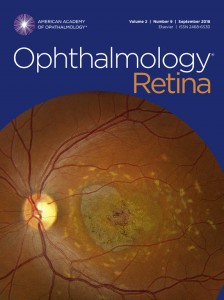Osservazione dei risultati ottenuti durante uno studio pilota, con impianto di lenti EyeMax in 11 pazienti affetti da maculopatia senile bilaterale.
 First Results of a New Hyperaspheric Add-on Intraocular Lens Approach Implanted in Pseudophakic Patients with Age-Related Macular Degeneration.
First Results of a New Hyperaspheric Add-on Intraocular Lens Approach Implanted in Pseudophakic Patients with Age-Related Macular Degeneration.
Hengerer FH1, Auffarth GU2, Robbie SJ3, Yildirim TM2, Conrad-Hengerer I2.
Author information
1 Department of Ophthalmology, University of Heidelberg, Heidelberg, Germany. Electronic address: fritz.hengerer@med.uni-heidelberg.de.
2 Department of Ophthalmology, University of Heidelberg, Heidelberg, Germany.
3 Department of Ophthalmology, St. Thomas’ Hospital, London, United Kingdom.
Ophthalmology Retina.
2018 September; 2(9):900-905. doi: 10.1016/j.oret.2018.02.003. Epub 2018 Mar 22.
Abstract
PURPOSE:
To determine the visual outcomes of the EyeMax Mono intraocular lens (IOL) technology (London Eye Hospital Pharma, London, UK), which is a foldable and injectable hydrophobic acrylic IOL implanted as an add-on solution in pseudophakic eyes with age-related macular degeneration, in a pilot study.
DESIGN:
A prospective, interventional case series.
PARTICIPANTS:
A total of 22 pseudophakic eyes (11 patients) with bilateral severe or intermediate dry age-related macular degeneration (AMD) (13 eyes) or stable wet AMD or disciform scarring (9 eyes) meeting the criteria for sulcal IOL implantation.
METHODS:
Both eyes of participating subjects underwent small-incision ciliary sulcal implantation of a hyperaspheric, soft hydrophobic acrylic intraocular lens designed to improve the quality of the retinal image in all areas of the macula ≤10° from fixation and to generate a moderate hypermetropic correction for magnification.
MAIN OUTCOME MEASURES:
The primary outcome was safety as determined by intra- and postoperative complications, raised intraocular pressure requiring medical or surgical intervention, postoperative diplopia, reduction in visual field, and loss of ≥2 lines of visual acuity. Secondary outcomes were improvements in subjective and objective visual acuity (logarithm of the minimum angle of resolution).
RESULTS:
No intraoperative complication occurred. Elevated intraocular pressure values were measured directly after the operative procedure in 2 eyes (25 mmHg and 27 mmHg) and at the 1-week postoperative visit in 1 eye (22 mmHg) but not later. The mean postoperative spherical equivalent of refraction changed to +2.5 diopters, and all eyes had gained ≥2 lines of visual improvement (corrected distance visual acuity) by 6 months after surgery. Corrected near visual acuity as well as corrected distance visual acuity improved over time, suggesting a neuroadaptive component to improved visual function with the device. Devices were implanted bilaterally in all patients, and there were no reported symptoms of dysphotopsia or diplopia.
CONCLUSIONS:
Safety concerns were not identified in the short-term or medium term. These results indicate the potential of the EyeMax Mono IOL to improve near and distance visual acuity in pseudophakic eyes with intermediate to severe AMD.
Copyright © 2018 American Academy of Ophthalmology. Published by Elsevier Inc. All rights reserved.
